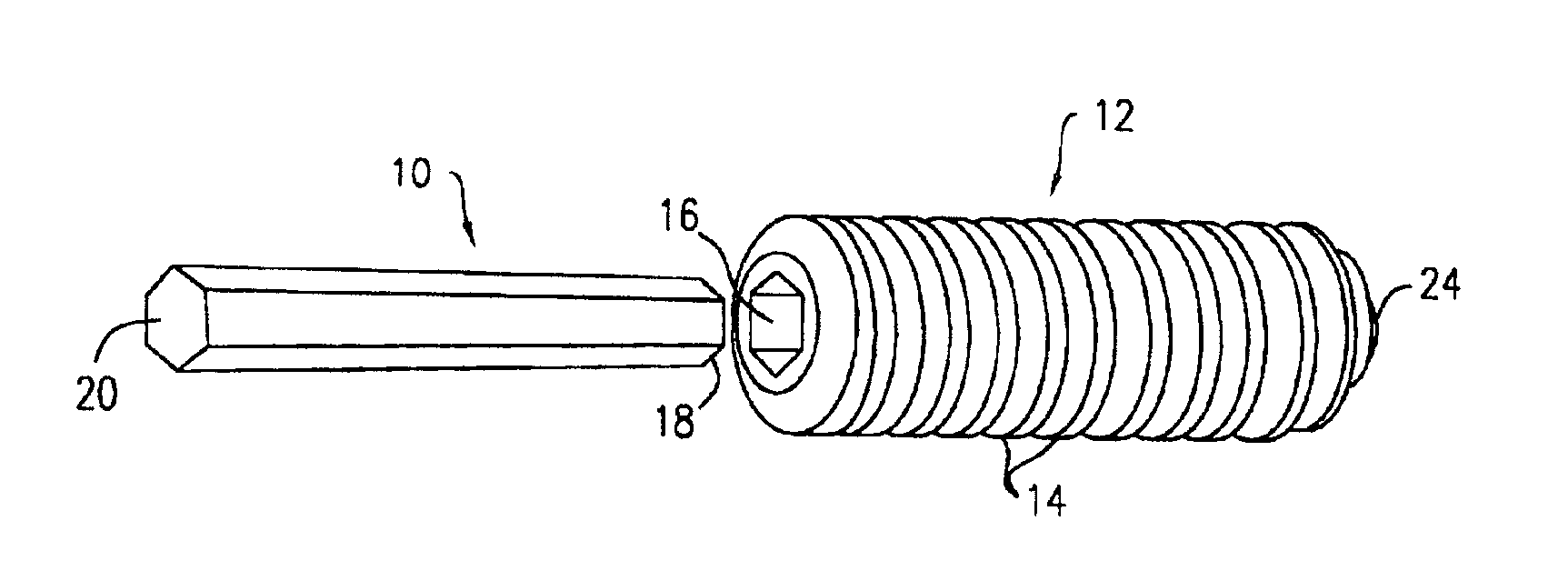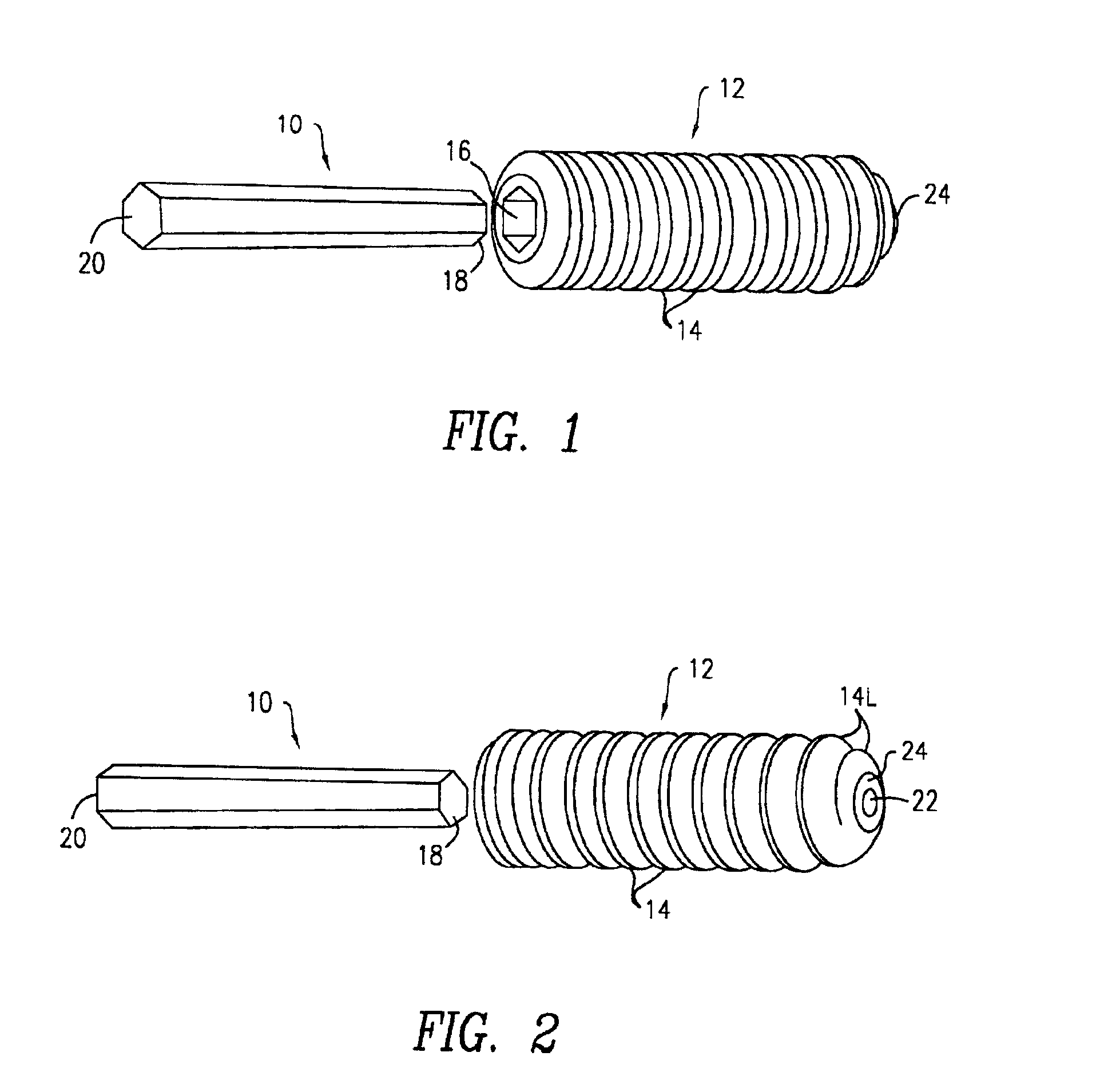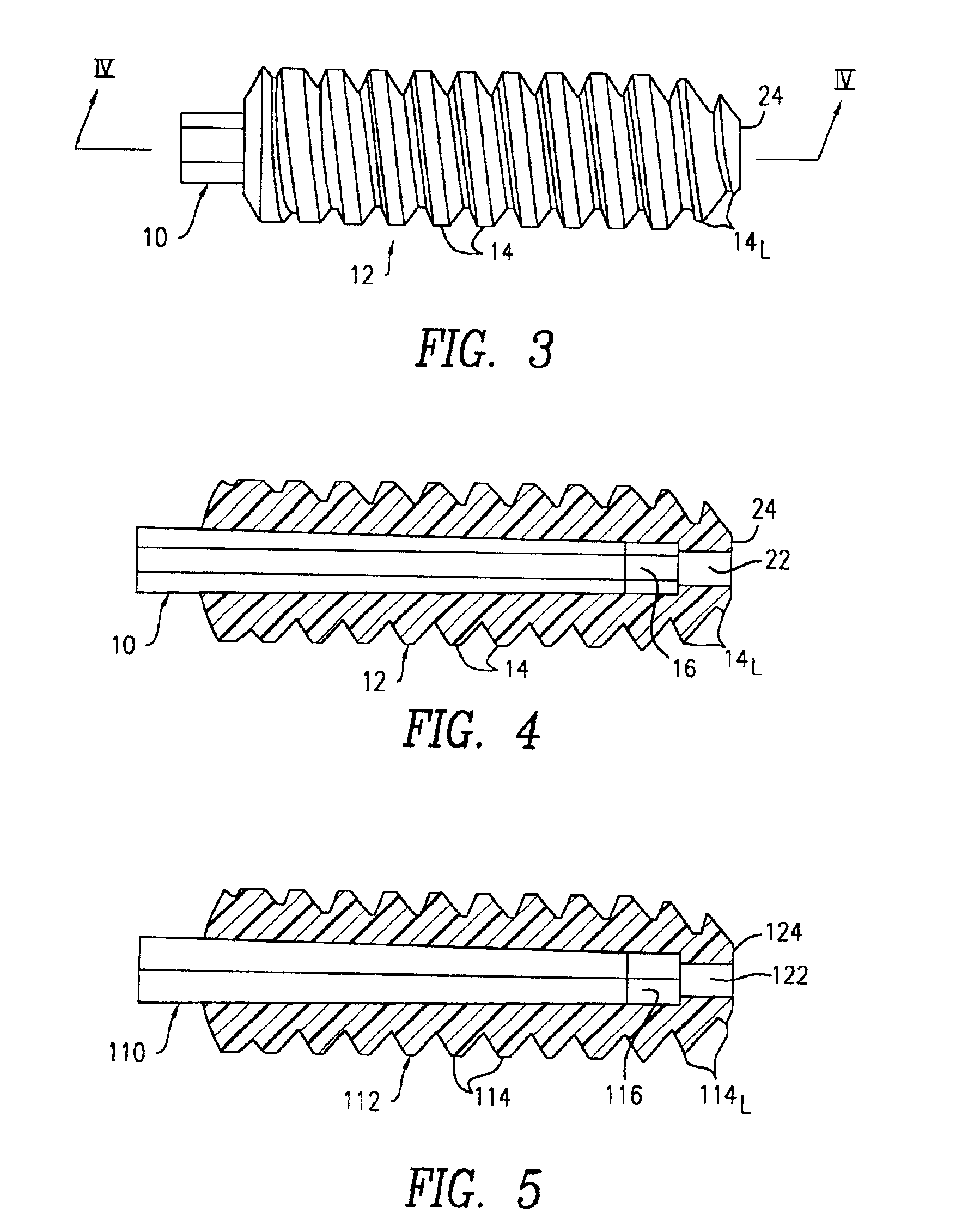Polymer-based orthopedic screw and driver system with increased insertion torque tolerance and associated method for making and using same
a technology of torque tolerance and screw, applied in the field of cannulated screws, can solve the problems requiring additional surgical procedures, and affecting the normal motion of the joint, so as to achieve the effect of increasing the contact between the driver and the screw
- Summary
- Abstract
- Description
- Claims
- Application Information
AI Technical Summary
Benefits of technology
Problems solved by technology
Method used
Image
Examples
example 1
[0028]An 15 / 85 (vol / vol) blend of beta-tricalcium phosphate (β-TCP, sold by CAM Implants by, Leiden, Netherlands) and poly(L-lactic acid) (PLA, sold by Purac Biochem, Gorinchem bv, Netherlands, with an Inherent Viscosity of 2.3 dl / g when measured in CHCl3 at a temperature of 25° C. and a concentration of 0.1 gm / dl was compounded on a twin-screw extruder. Screws similar to the polymer-based medical screw sold under the tradename ABSOLUTE (Mitek Products, Norwood, Mass.) were formed on an injection molder (Model NN35MI Super Mirs 4000, Niigata Engineering Company, Ltd., Itaska, Ill.) from the β-TCP / PLA blend. The screws were approximately 25-mm in (length) and 7-mm in (diameter). Differential scanning calorimetry (Model 2920, TA Instruments, New Castle, Del.) was performed on the unannealed screws to determine the percent crystallinity of the polymer. The polymer was amorphous.
example 2
[0029]Ten screws from Example 1 were placed onto stainless steel drivers obtained from Mitek Norwood, Mass. and were annealed (Model AGC-3366 MP2 inert gas oven with PRO-STAR controller, Blue M a unit of General Signal, Nanuet, N.Y.) in a nitrogen environment. The annealing cycle was: room temperature to 70° C. at a heating rate of 1° C. / min, hold at 70° C. for 4 hrs, and cool to room temperature at ˜1° C. / min. Differential scanning calorimetry, as discussed in Example 1, was performed on the screws annealed to determine the percent crystallinity of the polymer. As in Example 1, the polymer was amorphous.
example 3
[0030]Sixteen screws from Example 1 were placed onto stainless steel drivers and annealed as discussed in Example 2, but under a modified annealing cycle. For these screws, the modified annealing cycle was: room temperature to 70° C. at a heating rate of 1° C. / min, hold at 70° C. for 4 hrs, heat to 100° C. at a heating rate of 1° C. / min, hold at 100° C. for 8 hours, and cool to room temperature at ˜1° C. / min. Differential scanning calorimetry, as discussed in Example 1, was performed on these screws annealed with the modified cycle to determine the percent crystallinity of the polymer. In this case, the screws showed a crystallinity of 48 percent.
Testing of Examples 1, 2 and 3
[0031]Torque to strippage tests were performed on screws from Examples 1 through 3. Different screw and driver combinations / configurations were tested to determine the factors resulting in torque strippage improvement. These configurations are summarized in Table 1 and identified by sample set ID letters A-F. S...
PUM
 Login to View More
Login to View More Abstract
Description
Claims
Application Information
 Login to View More
Login to View More - R&D
- Intellectual Property
- Life Sciences
- Materials
- Tech Scout
- Unparalleled Data Quality
- Higher Quality Content
- 60% Fewer Hallucinations
Browse by: Latest US Patents, China's latest patents, Technical Efficacy Thesaurus, Application Domain, Technology Topic, Popular Technical Reports.
© 2025 PatSnap. All rights reserved.Legal|Privacy policy|Modern Slavery Act Transparency Statement|Sitemap|About US| Contact US: help@patsnap.com



